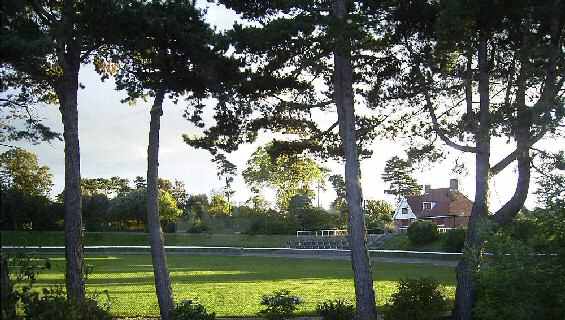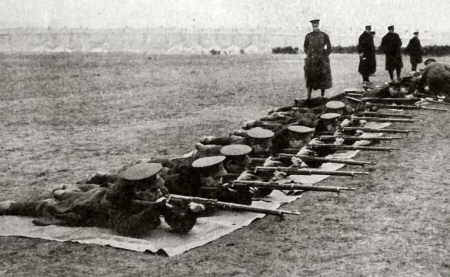|
Winton Recreation Ground

The idea of this public recreation facility was
originally raised in 1902. Two years later the Earl of Malmesbury
handed over 5.75 hectares of suitable land to Bournemouth Borough
Council. This was on the understanding that it would be laid out
as a Public Recreation Ground to serve the growing local population.
The area was cleared and the council even called in legendary
New Forest snake catcher Harry "Brusher" Mills to remove
undesirable wildlife.
The official opening of Winton Recreation Ground
took place on Wednesday, 27th September 1906. An extract from
the Bournemouth Graphic reads:
"Yesterday (26th ) was a notable day. The Earl
and Countess of Malmesbury opened the new Recreation Ground at
Winton, consisting of 14 acres (5.75 ha) and was generously presented
by the Earl of Malmesbury. The bowling green at one corner had
already been opened; there has now been laid out a cricket ground
surrounding which is a very good racing track for sports, and
close by is a football ground, a children's playground is to follow."
The bowling green had been officially opened on
25 July 1906. It had been a grand affair with tea taken to the
accompaniment of music from the municipal orchestra. In the course
of the proceedings the newly founded Richmond Park Bowling club
played and lost to a team from the Corporation.

The first bowling green opens
in July 1906
|
Plans for a Bowling Green Pavilion at Winton Recreation
Ground were submitted on the 11th October 1906, with subsequent
construction being undertaken in 1907. By the time it was built,
the Pavilion was already too small and was extended in 1912 by
another 12 ft. A new bowling green was laid out and opened in
July 1935.
One of the bowling club founders went on to have
a distinguished career in the game. Ernest Dean ran a gents outfitters
shop at Winton Banks, but was celebrated less for the cut of his
waiscoats than for his prowess on the green. He played for England
throughout the 1920's, was one of the first presidents of the
Richmond Park Bowling Club, and also President of both the English
and Hampshire County Bowling Associations.
It was recommended in 1919 that the cricket pitch
should be improved and two new tennis courts constructed, east
of the existing ones. During the 1920's a new playground was laid
out in its present location.
In 1922, following a deputation from the Bournemouth
Football Association the number of football pitches was extended
to two.
During the First World
War, part of the ground was turned over to the Army for use
as a firing range. During the Second
World War the Rec housed shelters, A.R.P. warden posts and
temporary rest centres to handle air raid victims.

Army rifle practice on Winton Rec
1914-18 |
In 1956, the tennis courts were re-surfaced and
set out in their present locations. The playscheme building was
constructed in 1980 to provide facilities for pre-school children.
The football pitches were replaced with an American football pitch
in the 1990's but the pitch was subsequently removed in March
1998 when the club ceased to operate.
The site includes traditional shrub planting and
pine plantations providing a screening of facilities at its periphery.
Following the storms of October 1987 and January 1990, much tree
and shrubbery planting was undertaken with a major replanting
in the 1988/9 planting season.
The site is set on two levels and surrounded on
all sides by high-density housing. Being the largest area of open
space for at least ½ mile (the nearest site involves crossing
major roads) it is a focal point for many activities - walking,
tennis, bowls, cricket and an area for children's recreation.
A cycle track runs around the edge of the cricket field. The largest
grass areas are dedicated to specific sports.
The cricket pavilion is approximately 90 years old
and was extended in 1962 and refurbished in 1999. The welfare
of Winton Rec is guarded by a group called Friends
of Winton Recreation Ground. You are invited to join them
The Rec in Winter

|